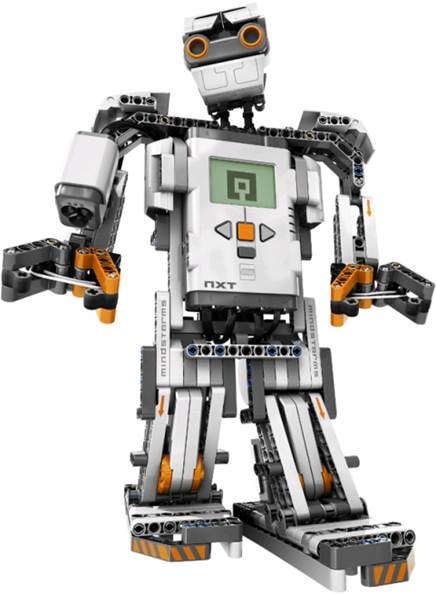There was a time when owning a
smartphone was all it took to set yourself apart as a geek. But the world has
changed. Gadgets have changed. With an Android or iPhone in almost every pocket
you need to work harder to elevate yourself to a more advanced level of supreme
geekiness that part-timers just can't reach. Here are over 40 tips, tricks and
hacks to ensure you're never outdone when it comes to things to make, do or
know about gadgets, tech and geek culture.
MAKE
We don't just own an arsenal of gadgets,
they should be able to hack, modify and utilize their tech to level-up their
life...
Darwin-OP Deluxe Edition
Website: www.robosavvy.com

Darwin-OP
Deluxe Edition
This 18in tall, open-source humanoid comes
packed with sensors and party tricks such as ‘soccer mode'. But to learn how to
build your own, try the Robo-projects overleaf...
Make robots
For the geek who loves to build things
there are few bigger thrills than making your own RoBo-buddy. Some of the
basics begin here.
The act of pulling disparate parts together
to create something that is both unique and, ideally, able to fetch a beer
holds a real allure. While the occasional Lego Architecture project is
diverting, the ultimate aim is nearly always to build a robot. Sci-fi visions
of bleepy humanoids leave many dreaming of building a personal R2D2, but
projects like that represent a small proportion of the homebrew robot scene.
The most obvious scene of a robot in use is
a robotic arm. It can play chess, using a system of sensors to work out where
the pieces are. Even though you have played computer chess before, there is
something captivating about this thinking machine and its ability to interact
with the real world via its arcane mechanics.
In the early days it was tough to find
sensors, controllers and motors, but we're now on the cusp of a golden age for
robot hobbyists. According to the International Federation of Robotics, there
are about 200 companies registered as robot manufacturers, but tens of
thousands of companies that manufacture robot parts and components. This year
even saw the arrival of the InMoov, a robot hand you can download
fromthingiverse.com and 3D print.
Of course, RoBo-projects often demand
soldering, tinkering with servos and a spot of coding, but there are easier
options for the beginner. You can take a crash course in microcontrollers and
electronics by using kits such as the Qu-Bot (robokits.com) - but the
novice-friendly projects we've included below will offer a grounding without
getting you knee-deep in electronics.
With the robot scene today feeling a little
like the homebrew computing revolution of the 1980s, this is the perfect time
to build your ticket to geek cred and Steve Wozniak notoriety!
Entry level: 6-in-1 Solar Kit
Website: www.red5.com

6-in-1
Solar Kit
This entry-level kit isn't what we'd call a
classic robot (it has no brains at all), but it does provide a valuable insight
into the basics of how a moving machine works. The kit provides a power source
(a solar cell that generates a tiny amperage of about 3V, depending on the
light) and a motor for bestowing physical movements on your creation. Although
these parts are connected in the same way each time, the motor can be hooked up
to a variety of things to make ‘robots' that behave differently. Give it some
wheels to make a car, or attach some legs and the motor will vibrate and shake
your robot ‘dog' along. Not exactly a personal K-9, but it's a decent start all
the same.
Step up: Velleman
Robotic Arm Kit with USB
Website: www.maplin.com

Velleman
Robotic Arm Kit with USB
Proper' robots require a brain to function,
but such machines can be a little pricey. A good halfway house, then, is a
robot you can attach to your laptop or computer to provide the thinking. This
kit is well designed and you'll end up with a very useable robot arm. It isn't
for those who are afraid of using a screwdriver and takes two or three hours to
build, but once completed it's the master of all it can reach. A handy USB
interface attaches it to your computer (Windows only), and some basic but
serviceable software will see you through getting it to do things. If you want
a challenge, try programming it to complete a ‘towers of Hanoi' puzzle.
Big brain: Lego Mindstorms NXT
Website: www.ebay.com

Lego
Mindstorms NXT
Mindstorms proves that Lego is no mere toy
- geeks have built machines that solve Rubik's Cubes, sort laundry and draw
pictures using it. The NXT 2.0 possesses three servo-driven motors, a light
sensor, camera, two touch sensors and an ultrasonic rangefinder. It isn't
enough to build a Cylon, but it's a start. The NXT brick houses an LCD screen
and the microprocessor brain of your creations and connects to the sensors to
make stuff happen, while configuring the robot is easy due to a visual
programming language (Mac/PC) that lets you drag and drop commands into a
useful sequence. In spite of being ‘just' a plastic toy, the NXT is as close as
it gets to real robotics without having to mess around with electronics.